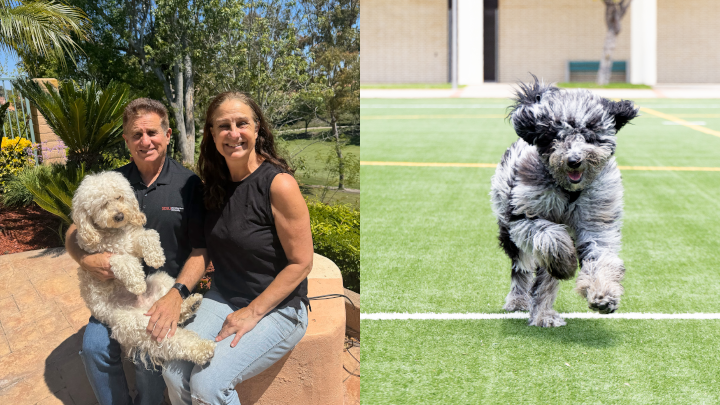Cardiovascular Engineering Professor Brings Heart to Research as Engineering Pioneer
Karen May-Newman was the first female faculty member in the College of Engineering over 20 years ago. Now, shes gearing her other students to do the same.

Hard things are worth doing.
That’s the lived advice of Karen May-Newman, a professor with over two decades of experience in San Diego State University’s Department of Mechanical Engineering.
As the first female faculty member on staff, the first and only female department chair in Engineering at SDSU from 2003-2007, and a Distinguished Faculty Award winner, May-Newman is a leader and pioneer in the college for women.
She started her undergraduate career at the University of California San Diego as a biology major, but found that classes were too big, and in a chance of fate, she changed her major to chemistry. Through her coursework, she then combined her love of all STEM areas to a doctoral degree and health care research in bioengineering.
Centering on bioengineering, May-Newman’s research is focused on the interaction of cardiovascular medical devices with the human body’s cardiovascular system, and has been funded by grants from the National Science Foundation, the American Heart Association, the San Diego Foundation and private companies. This includes understanding valve functions in patients who have a left ventricular assist device, or LVAD, a pump surgically connected to the heart and aorta in order to boost systemic blood flow.
In her office, she sits behind a framed diagram of a heart from the Gray’s Anatomy textbook. It’s a gift from a former student that can be interpreted as a nod to her area of research or her heart for mentoring and providing learning opportunities to engineering students.
Across the board, many female students say they have looked up to May-Newman as a professor and a mentor.
Take Vi Vu, a current postdoctoral researcher in SDSU’s Cardiovascular Bioengineering Lab (CBL) who began as an undergraduate student researching under May-Newman in 2011. She describes May-Newman as an encouraging researcher who assists students as they fine tune their skill sets.
“As a non-native speaker, female, and minority student, it was difficult for me to envision getting an advanced degree in the engineering field,” said Vu. “As I watched Dr. May-Newman manage her lab, teaching, family, and daily life, I realized that obtaining success doesn't mean having everything figured out, but rather applying continuous efforts and grit. She inspires me to work toward my dreams and to always have a curious mindset by being a living example.”
Ambitious first-year researcher Britton Mennie has similar experiences with May-Newman, having begun working under her after reading about the CBL and cold emailing her to inquire about lab openings. She now works in the lab where she’s able to learn real-life applications of the LVAD device from not only May-Newman, but also from other upper division students and postdoctoral researchers in the lab like Vu.
“Dr. May-Newman has provided several opportunities for me that I would not have gotten without being in the lab, like presenting my own project at the Student Research Symposium last March. She is always making an effort to include people in her lab regardless of age and gender, which is often not seen within other research labs,” said Mennie.
“Ultimately, Dr. May-Newman has created a space where I can explore and learn more about what I am passionate about while still being challenged in a unique learning environment.”
“Dr. May-Newman is both an outstanding teacher and an exceptional scholar,” said then-College Dean David Hayhurst when May-Newman received her Faculty Award in 2008. “She spearheaded the establishment of both a master’s program and a joint doctoral program in bioengineering, all while chairing the Department of Mechanical Engineering.”
She’s added multiple accolades since then, including serving as the co-director of education for an NSF Engineering Research Center on Neurotechnology for seven years, developing materials and outreach for K-12 students and teachers, university students, and the general public. She is currently leading the Big Ideas campuswide research initiative for the SDSU President’s Office.
At the heart of it all, though, May-Newman continues to conduct meaningful research that improves the lives of patients with heart disease through innovative approaches to medical device design and integration.



